Could something in men’s favorite foods be undermining their sexual health and fertility?
Dropping testosterone levels, fibrotic inflammatory benign testicular tumors, and even fertility problems in men could have an oxalate component. The good news, you can do something about it.
Are Your Sperm Incompetent?
Infertility affects nearly 50 million couples around the world. That’s about 1 in 6 couples who struggle to conceive after a year of regular, unprotected sex. And while fertility is often viewed as a “women’s issue,” about one-quarter of infertility cases are due to infertile men.
Surprisingly, one hidden culprit might be something we eat every day—oxalate, a natural compound found in many healthy-sounding foods like spinach, almonds, sweet potatoes, and even chocolate.
Oxidative Stress: The Sperm Saboteur
One of the lesser-known causes of male infertility is oxidative stress. This occurs when the body is overwhelmed by harmful molecules called free radicals, or reactive oxygen species (ROS). Normally, our cells create antioxidants to neutralize these troublemakers—but when the damage out-strips this capacity, the resulting oxidative stress can damage sperm, reducing their ability to move, survive, and fertilize an egg.
Environmental toxins like heavy metals, certain drugs, industrial chemicals—and yes, naturally-occurring oxalate in many plant foods—can increase oxidative stress in the body. When it comes to sperm function, that’s bad news. Even a 25% rise in ROS levels in semen has been linked to a 10% increase in sperm DNA damage and significantly reduced sperm motility. (Kumar, 2018)
Animal Studies Show the Hidden Role of Oxalate and Oxidative Stress
In lab studies, when rats were given ethylene glycol—the active chemical in antifreeze that turns into oxalate inside the body—it caused major oxidative stress in the testicles and sperm. (Lavranos, 2012) That kind of stress doesn’t just affect fertility; it can lead to long-term testicular damage.
Sperm’s Journey: A Delicate Path with a Dangerous Obstacle
Sperm must navigate through fragile structures in the testicles known as the rete testis and efferent ductules. These tiny passageways are especially vulnerable to oxalate buildup. Even small, dissolved amounts of oxalate can damage delicate testicular structures and cause mitochondrial injury, disrupt cell energy production, trigger and perpetuate oxidative stress, and contribute to long-term tissue damage.
Human Evidence: What the Research Says
A study in Germany analyzed semen samples from 100 healthy young men. The results? Higher oxalate levels in semen were linked to abnormal sperm head shape, lower ejaculate volume, and more acidic semen pH levels—especially in older men. (Eiss, 2000)
This makes sense: oxalate accumulates in the body over time—primarily from the foods we eat. The oxalate retention in the body can be made worse by age-related changes in metabolism and kidney function. Autopsy studies have found calcium oxalate crystals, cysts, and tissue breakdown in the testes of aging men and dialysis patients, revealing how common and damaging this accumulation can be. (Nistal, 1996; Nistal, 2004)
The older we get, the more oxalate may build up—and the more it builds up, the more damage it can do. The more extensive the build up and the damage it causes, the harder it is to reverse that damage.
Could Oxalate Be Quietly Destroying The Boys?
Could something in men’s favorite foods be undermining their sexual health?
The evidence is building. While mainstream medicine has yet to fully embrace this connection, existing science suggests that oxalate may be a silent contributor in many cases of “unexplained” male infertility and a saboteur of male reproductive health.
Even if you don’t want to father a child, paying attention to your oxalate consumption may still be important for your health. Testosterone levels in men affect sperm production and overall male fertility. Eating excessive oxalic acid depresses sex gland function in research using rats. (Goldman & Doering 1977)
While there isn’t definitive evidence linking oxalates directly with testosterone levels in humans, it’s not only possible that a high oxalate intake might reduce gland function but also affect other known metabolic factors that could indirectly affect testosterone production. For instance, chronic kidney issues (oxalate is the biggest contributor to kidney disease) can reduce the body’s ability to produce testosterone, which in turn affects sperm production and overall male fertility.
And there may be increased susceptibility to fibrotic inflammatory benign tumors. After vasectomy, it is common for men to develop sperm granulomas—a mass of sperm cells surrounded by inflammatory cells and fibrous tissue. This also occurs with aging and sometimes with kidney failure. One reported case from the UK describes a mass of oxalate crystals under the scrotum and other testicular tissues (the rete testis, the ductuli efferentes, and the epididymis) with sperm granuloma in a 30 year old man. (Coyne, 1994.) Authors describe his testicular problems as a complication of oxalate crystal build up in the body.
An oxalate-overloaded diet can lead to a wide variety of health complications, perhaps even sperm granuloma in vulnerable men. Chances are that oxalate-aware eating can support life-long reproductive health in men and help prevent sperm granulomas (before or after vasectomy) and other common male reproductive disorders.
Here’s the good news: you have control over your oxalate intake. At least 75% of the oxalate in your body comes from food and vitamin C supplements. With some informed choices, you can lower your oxalate consumption and reduce the risks to your health.
Oxalate and Minerals
Other important effects of excessive oxalate consumption are mineral and electrolyte imbalances and deficiency. Mineral issues can have a significant impact on male fertility.
Calcium and Magnesium: Oxalates bind with calcium and magnesium, which can reduce the bioavailability of these important minerals. Calcium and magnesium are essential for various body functions, including those related to fertility. If oxalate-rich foods significantly interfere with mineral absorption over time, a long-term imbalance could potentially have an effect on reproductive health.
Zinc and Iron: Oxalates can also interfere with the absorption of other nutrients like zinc and iron, both of which are crucial for maintaining a healthy reproductive system. Zinc is especially important for sperm production in men and for hormonal balance in women. Maybe that is why oysters are considered to be an aphrodisiac. And why a steak is “sexy.”
Calcium Signaling: Sperm motility is partly regulated by calcium ions. If oxalate binds with calcium to form calcium oxalate crystals, it could disrupt normal calcium signaling in sperm cells, potentially impairing their movement.
Simple Diet Changes That Could Boost Your Fertility and Long-Term Sexual Health
Want to take action? Here’s how:
- Cut back on high-oxalate foods like spinach, almonds, peanuts, potatoes, beets, and chocolate.
- Cut back on Vitamin C added to drinks and supplements. Keep daily intake under 400 mg daily.
- Focus on animal proteins like eggs, beef, pork, chicken, and seafood—these are naturally low in oxalate and provide nutrients essential for reproductive health.
(Knight, 2009; Baker, 1994; Hiatt, 1996) - Stay hydrated and support kidney health with adequate electrolytes and other minerals, especially calcium and potassium.
- Avoid toxins and ultra-processed foods that worsen oxidative stress such as smoking, air-fresheners, fragrances, pesticides, and commercial junk foods, including processed vegetable oils used in margarine, mayonnaise, salad dressings, and baked goods.
- Herbicides can be especially toxic. Don’t live within one mile of a golf course or other heavily treated “green spaces.” Golf courses are notorious for copious applications of herbicides and pesticides which are linked to neurodegenerative conditions, especially Parkinson’s, testicular cancer, and other reproductive problems.
- Learn more about the benefits of oxalate-aware eating and how to do it well by reading Toxic Superfoods, and the Data Companion to Toxic Superfoods
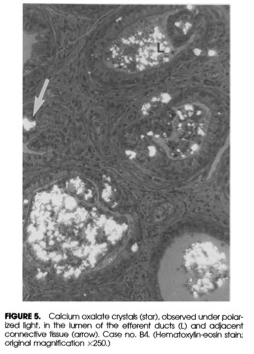
Every Man Can Benefit from Oxalate Awareness
If you’re hoping to become a father—or just want to protect your long-term health—these simple changes could make a world of difference. Don’t wait for health problems to start before protecting your well-being and fertility. Just pay attention to that oxalate piling up on your plate.
For reliable data to support oxalate-aware eating, see my Data Companion to Toxic Superfoods. There you will find instructions and a 150-page chart of foods tested for their oxalate content. Use this guide to protect yourself from wasting time and making mistakes because of the oxalate mythology on the internet.
Eating ample animal protein and animal fats is beneficial. So enjoy a delicious diet rich with seafood, steak, eggs, butter, and bacon while curbing your intake of potatoes, nuts, chocolate and other high oxalate foods.
Oxalate may be hiding in your diet.
But once you see it—you can beat it.
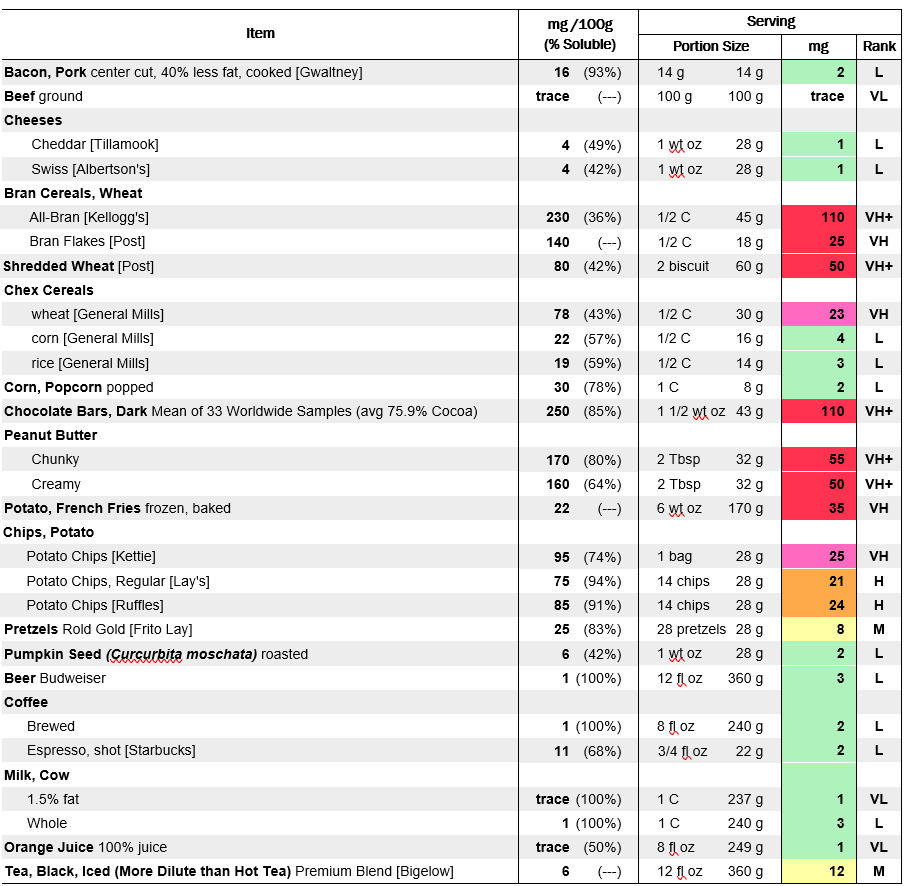
REFERENCES
Baker, P. R. S., Cramer, S. D., Kennedy, M., Assimos, D. G., & Holmes, R. P. (2004). Glycolate and glyoxylate metabolism in HepG2 cells. American Journal of Physiology – Cell Physiology, 287(5), C1359–C1365. https://doi.org/10.1152/ajpcell.00238.2004
Coyne, J., al-Nakib, L., Goldsmith, D., and O’Flynn, K. (1994). Secondary oxalosis and sperm granuloma of the epididymis. J. Clin. Pathol. 47, 470–471.
Eiss, M., Schieferstein, G., and Wahl, R. (2000). Oxalate in human seminal plasma: possible significance and problems of oxalate determination. Fertil Steril 73, 961–966. ttps://doi.org/10.1016/s0015-0282(00)00413-1.
Goede, J., Hack, W. W. M., van der Voort-Doedens, L. M., Sijstermans, K., & Pierik, F. H. (2009). Prevalence of testicular microlithiasis in asymptomatic males 0 to 19 years old. The Journal of Urology, 182(4), 1516–1520. https://doi.org/10.1016/j.juro.2009.06.065
Goldman, M., Doering, G. J., & Nelson, R. G. (1977). Effect of dietary ingestion of oxalic acid on growth and reproduction in male and female Long-Evans rats. Research Communications in Chemical Pathology and Pharmacology, 18(2), 369–372.
Hiatt, R. A., Ettinger, B., Caan, B., Quesenberry, C. P., Duncan, D., & Citron, J. T. (1996). Randomized controlled trial of a low animal protein, high fiber diet in the prevention of recurrent calcium oxalate kidney stones. American Journal of Epidemiology, 144(1), 25–33.
Knight, J., Easter, L. H., Neiberg, R., Assimos, D. G., & Holmes, R. P. (2009). Increased protein intake on controlled oxalate diets does not increase urinary oxalate excretion. Urological Research, 37(2), 63–68. https://doi.org/10.1007/s00240-009-0170-z
Kumar, N., and Singh, A.K. (2015). Trends of male factor infertility, an important cause of infertility: A review of literature. J Hum Reprod Sci 8, 191–196. https://doi.org/10.4103/0974-1208.170370.
Kumar, P., Patel, M., Oster, R.A., Yarlagadda, V., Ambrosetti, A., Assimos, D.G., and Mitchell, T. (2021). Dietary Oxalate Loading Impacts Monocyte Metabolism and Inflammatory Signaling in Humans. Front. Immunol. 0. https://doi.org/10.3389/fimmu.2021.617508.
Kumar, P., Saini, K., Saini, V., and Mitchell, T. (2021). Oxalate Alters Cellular Bioenergetics, Redox Homeostasis, Antibacterial Response, and Immune Response in Macrophages. Front Immunol 12, 694865. https://doi.org/10.3389/fimmu.2021.694865.
Lavranos, G., Balla, M., Tzortzopoulou, A., Syriou, V., and Angelopoulou, R. (2012). Investigating ROS sources in male infertility: a common end for numerous pathways. Reprod Toxicol 34, 298–307. https://doi.org/10.1016/j.reprotox.2012.06.007.
Mahfouz, R., Sharma, R., Thiyagarajan, A., Kale, V., Gupta, S., Sabanegh, E., and Agarwal, A. (2010). Semen characteristics and sperm DNA fragmentation in infertile men with low and high levels of seminal reactive oxygen species. Fertility and Sterility 94, 2141–2146. https://doi.org/10.1016/j.fertnstert.2009.12.030.
McMartin, K.E., and Wallace, K.B. (2005). Calcium oxalate monohydrate, a metabolite of ethylene glycol, is toxic for rat renal mitochondrial function. Toxicol. Sci. 84, 195–200. https://doi.org/10.1093/toxsci/kfi062.
Moretti, E., Signorini, C., Noto, D., Corsaro, R., & Collodel, G. (2022). The relevance of sperm morphology in male infertility. Frontiers in Reproductive Health, 4, 945351. https://doi.org/10.3389/frph.2022.945351
Nistal, M., Jiménez-Heffernan, J.A., García-Viera, M., and Paniagua, R. (1996). Cystic transformation and calcium oxalate deposits in rete testis and efferent ducts in dialysis patients. Hum Pathol 27, 336–341. https://doi.org/10.1016/s0046-8177(96)90105-7.
Thamilselvan, V., Menon, M., & Thamilselvan, S. (2009). Oxalate-induced activation of PKC-alpha and -delta regulates NADPH oxidase-mediated oxidative injury in renal tubular epithelial cells. American Journal of Physiology. Renal Physiology, 297(5), F1399-1410. https://doi.org/10.1152/ajprenal.00051.2009
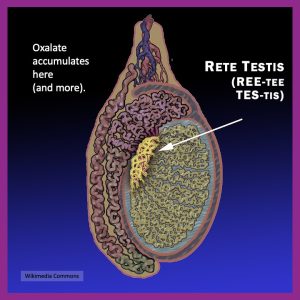
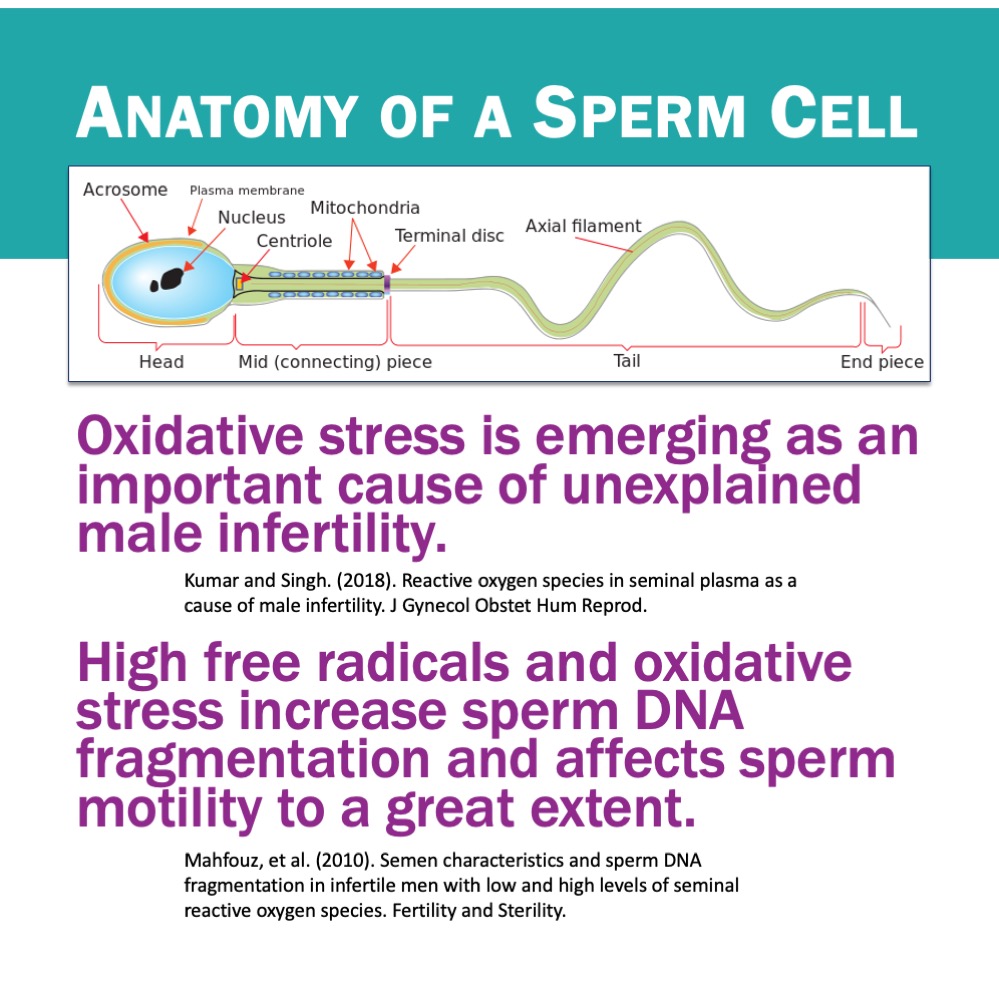
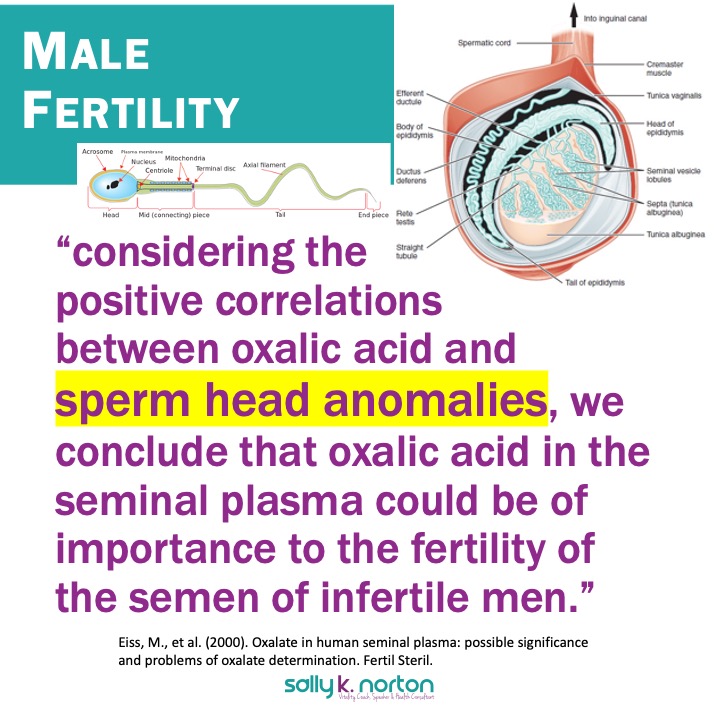
Leave a Reply